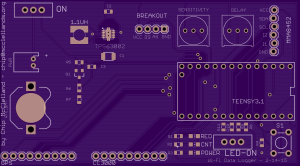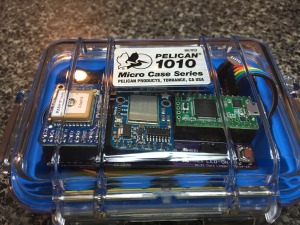Ford, Chrysler, RAM, Dodge, and Scion have embraced an open standard for conveniently recharging portable devices that appears to be more effective and just easy to use as inductive charging systems. It’s called Open Dots.
The basic idea is to use a set of four parallel conductive strips to carry positive and negative voltages (or +V and ground, depending on your point of view) and have the package of a device to be charged connect to the charging strip automagically just by resting on it. The device to charge has a pattern of four conductive “dots” on its case that will properly connect with the charging pad in any orientation. This scheme was invented for recharging toys in 1963.
I’m sharing this as a potentially handy way to deal with the general problem of recharging battery-operated gadgets. It would take a fair amount of work to implement the pieces and parts involved with the actual electrical connections, but based on the specification this is on the other end of the scale from rocket science and one would hope that the basic components may be or become cheaply available if the auto industry is involved .
As far as I can tell from their web site anybody could freely use these circuits and connector specs without consequences. (In order to sell something using the Open Dots logo one would need to execute and abide by a member agreement. But you do not need to get within a mile of this logo and could simply use the specs and reference circuits freely until you start selling a ton of stuff and see an advantage to becoming “official”.)
(Open Dots logo used without permission.)






